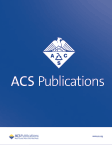摘要 PO5-14-01:对乳腺癌风险增加的围绝经期和绝经后超重和肥胖妇女进行减肥和ω-3多不饱和脂肪酸干预可改变肠道微生物组并与循环生物标志物相关联
IF 3.4
Q2 PUBLIC, ENVIRONMENTAL & OCCUPATIONAL HEALTH
引用次数: 0
摘要
背景:与肥胖相关的肠道微生物群失调被认为会通过改变雌激素代谢和增加促炎微生物丰度来增加绝经后乳腺癌的风险。许多研究报告称,作为肥胖的生物标志物,固着菌/类杆菌比例的增加与不良代谢结果有关。海洋ω-3二十碳五烯酸(EPA)和二十二碳六烯酸(DHA)脂肪酸被认为具有良好的新陈代谢和消炎特性,可降低多种上皮癌症的风险。一种可能的机制是 EPA 和 DHA 对肠道微生物组的影响。我们评估了减肥和/或补充欧米伽-3对肠道微生物组和循环分子乳腺癌风险因素的影响。方法:46 名围绝经期/绝经后超重和肥胖的乳腺癌高危女性参加了减肥干预,2 周后随机接受每天 3.25 克 EPA 和 DHA 的组合或安慰剂 (PMC8416797)。26名患者在0、2周和6个月时采集了粪便样本,并在所有时间点采集了匹配的粪便样本。有 34 名患者在 6 个月时获得了粪便样本。对从粪便中分离出的 DNA 进行了 1200 万读数深度的元基因组测序,以确定肠道微生物群的变化。此外,还采集了空腹和非空腹血液,用于循环生物标志物分析。在基线和 6 个月的时间点,还通过 DXA 扫描进行了身体成分分析。结果显示平均基线体重指数为 32 kg/m2。各组之间在年龄、基线体重指数、体脂百分比或基线固缩菌/类杆菌比率方面没有明显差异。我们确定了与代谢参数(体脂百分比、脂肪连素/瘦素比率和空腹胰岛素)相关的肠道微生物群物种(A. hadrus 和 P. faecium)、与雌二醇水平相关的物种(P. dorei 和 B. ovatus)以及其丰度与炎症(通过循环单核细胞-血液吸引蛋白 1 (MCP-1)测量)相关的粘蛋白降解物种(D. formicigenerans 和 R. gnavus)。所有随机受试者 6 个月体重变化的中位数与基线相比为-10%。固着菌/类杆菌比率的有利变化与体重减轻程度和补充欧米伽-3有关,但体重减轻组和欧米伽-3 PUFA组之间的物种变化显著不同。与其他组别相比,体重减轻>10%且同时补充欧米伽-3的女性,其坚实菌丰度明显降低,坚实菌/类杆菌比率也更低。体重减轻和补充欧米伽-3 的物种丰度变化似乎有所不同,体重减轻会改变 3 个物种,而补充欧米伽-3 PUFA 则会改变 12 个物种。补充欧米伽-3 PUFA可显著降低与炎症有关的微生物Dorea formicigenerans的丰度比例。结论与安慰剂相比,每天补充 3.25 克 Omega-3 对改变正在接受减肥干预的乳腺癌风险增加的超重和肥胖妇女的肠道微生物组具有更大的净效应。肠道微生物组的变化可作为欧米伽-3脂肪酸和减肥II期预防试验中有用的反应生物标志物。引用格式:凯瑟琳-库克(Katherine L. Cook)、艾琳-贾尔斯(Erin Giles)、艾米-克鲁茨扬斯(Amy Kreutzjans)、沙希德-乌马尔(Shahid Umar)、克里斯蒂-贝福特(Christie Befort)、布鲁斯-金勒(Bruce Kimler)、斯蒂芬-赫斯汀(Stephen Hursting)、卡罗尔-法比安(Carol Fabian)。对乳腺癌风险增加的超重和肥胖围绝经期和绝经后妇女进行减肥和ω-3 多不饱和脂肪酸干预可改变肠道微生物组并与循环生物标志物相关[摘要]。In:2023 年圣安东尼奥乳腺癌研讨会论文集;2023 年 12 月 5-9 日;德克萨斯州圣安东尼奥。费城(宾夕法尼亚州):AACR; Cancer Res 2024;84(9 Suppl):Abstract nr PO5-14-01。本文章由计算机程序翻译,如有差异,请以英文原文为准。
Abstract PO5-14-01: Weight loss and omega-3 polyunsaturated fatty acid intervention in overweight and obese peri- and postmenopausal women with increased breast cancer risk modifies the gut microbiome and is associated with circulating biomarkers
Background: Obesity-associated gut microbiome dysbiosis is thought to increase risk for postmenopausal breast cancer through alteration of estrogen metabolism and an increase in pro-inflammatory microbe abundance. Many studies have reported an increase in the Firmicutes/Bacteroidetes phyla ratio as a biomarker of obesity and is associated with adverse metabolic outcomes. Marine omega-3 eicosapentaenoic (EPA) and docosahexaenoic (DHA) fatty acids are thought to have favorable metabolic and inflammation resolving properties resulting in reduced risk for several epithelial cancers. One possible mechanism is the effect of EPA and DHA on the gut microbiome. We assessed the effect of weight loss and/or omega-3 supplementation on the gut microbiome and circulating molecular breast cancer risk factors. Methods: 46 peri/postmenopausal overweight and obese women at increased risk for breast cancer were enrolled into a weight-loss intervention and after 2 weeks randomized to 3.25 g/day combined EPA and DHA or placebo (PMC8416797). Fecal samples were collected at 0, 2-weeks and 6-months, with matched fecal samples for all timepoints available for 26 patients. Fecal samples at 6-months were available for 34 patients. 12M read depth metagenomic sequencing was performed on DNA isolated from feces to determine shifts in the gut microbiome. Fasting and non-fasting blood was also collected for circulating biomarker analysis. Body composition by DXA scan were also performed at baseline and 6-month time points. Results: Mean baseline BMI was 32 kg/m2. There was no significant difference between arms in age, baseline BMI, % body fat, or baseline Firmicutes/Bacteroidetes ratio. We identified gut microbiota species (A. hadrus and P. faecium) that correlated with metabolic parameters (% body fat, adiponectin/leptin ratio, and fasting insulin), species (P. dorei and B. ovatus) that correlated with estradiol levels, and mucin-degrading species (D. formicigenerans and R. gnavus) whose abundance correlated with inflammation (as measured by circulating monocyte-chemoattractant protein 1 (MCP-1)). Median 6-month weight change for all randomized subjects was -10% from baseline. Favorable change in the Firmicutes/Bacteroidetes ratio was associated both with the degree of weight loss and with omega-3 supplementation, although significant species modification differed between weight loss and omega-3 PUFA groups. Women with both >10% weight loss and omega-3 supplementation had a significantly reduced Firmicutes abundance and lower Firmicute/Bacteroidetes ratio than other groups. Species abundance shifts appear to differ between weight loss and omega-3 supplementation with 3 species modified by weight loss and 12 species shifted by omega-3 PUFA administration. Omega-3 PUFA supplementation significantly reduced proportional abundance of Dorea formicigenerans, which was a microbe associated with inflammation. Conclusions: Omega-3 supplementation at 3.25 g/day compared to placebo had a greater net effect on changing the gut microbiome in overweight and obese women at increased risk for breast cancer undergoing a weight loss intervention. Change in the gut microbiome may serve as a useful response biomarker in Phase II prevention trials of omega-3 fatty acid and weight loss.
Citation Format: Katherine L. Cook, Erin Giles, Amy Kreutzjans, Shahid Umar, Christie Befort, Bruce Kimler, Stephen Hursting, Carol Fabian. Weight loss and omega-3 polyunsaturated fatty acid intervention in overweight and obese peri- and postmenopausal women with increased breast cancer risk modifies the gut microbiome and is associated with circulating biomarkers [abstract]. In: Proceedings of the 2023 San Antonio Breast Cancer Symposium; 2023 Dec 5-9; San Antonio, TX. Philadelphia (PA): AACR; Cancer Res 2024;84(9 Suppl):Abstract nr PO5-14-01.
求助全文
通过发布文献求助,成功后即可免费获取论文全文。
去求助
来源期刊

ACS Chemical Health & Safety
PUBLIC, ENVIRONMENTAL & OCCUPATIONAL HEALTH-
CiteScore
3.10
自引率
20.00%
发文量
63
期刊介绍:
The Journal of Chemical Health and Safety focuses on news, information, and ideas relating to issues and advances in chemical health and safety. The Journal of Chemical Health and Safety covers up-to-the minute, in-depth views of safety issues ranging from OSHA and EPA regulations to the safe handling of hazardous waste, from the latest innovations in effective chemical hygiene practices to the courts'' most recent rulings on safety-related lawsuits. The Journal of Chemical Health and Safety presents real-world information that health, safety and environmental professionals and others responsible for the safety of their workplaces can put to use right away, identifying potential and developing safety concerns before they do real harm.
 求助内容:
求助内容: 应助结果提醒方式:
应助结果提醒方式:


